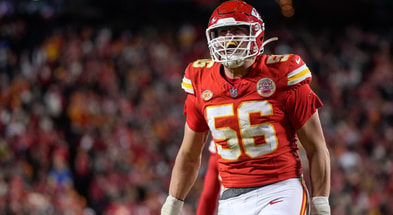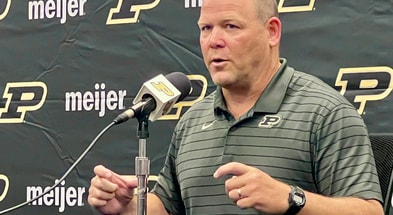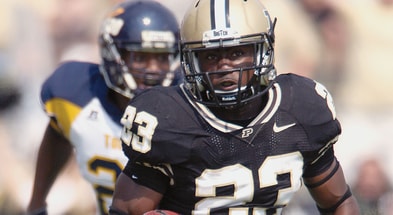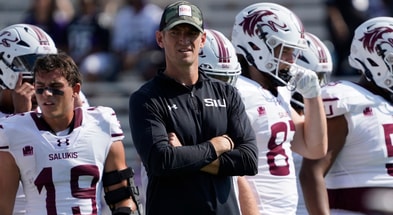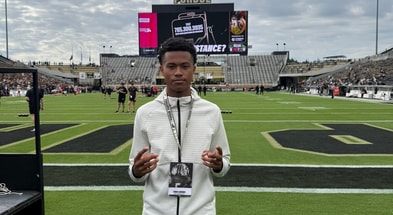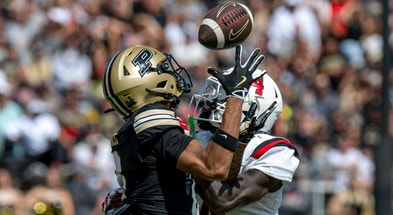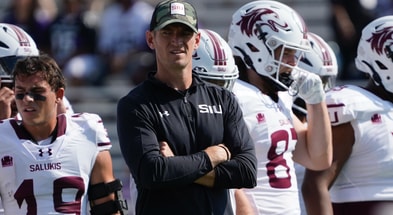The Butterfly Effect: Carl Landry and David Teague getting hurt

“The Butterfly Effect” is a limited-run series, GoldandBlack.com/Gold /Gold and Black Express, rolling out this summer, highlighting events that occurred or decisions that were made that rippled out and helped Purdue reach its current level, highlighted by last season’s Final Four and leading into this much-anticipated coming season.
An example of the Butterfly Effect in this context: Roy Williams leaving Kansas for North Carolina, thus pulling Bill Self from Illinois to Kansas, leading to Bruce Weber getting the Illinois job, and Matt Painter being promoted at Southern Illinois, all just as Purdue’s post-Gene Keady plans had to be made.

PART 1: CARL LANDRY AND DAVID TEAGUE BOTH TEAR THEIR ACLS
It was major injuries to Purdue’s Carl Landry and David Teague — its two best players during this time frame — that turned Gene Keady’s last season and Matt Painter’s first into scorched earth, the Boilermakers going 16-40 over those two seasons, sending Keady out unceremoniously and starting Painter off on a wobbly foot.
But then in a twist of irony, it was major injury then that set Painter up for the early success that really got the ball rolling.
With Landry and Teague back as fifth-year seniors — both were able to redshirt after their injuries — they were the foundation of a Boilermaker team that returned to the NCAA Tournament, beating Lute Olson and then-blueblood Arizona in New Orleans before falling in respectable fashion to eventual national champion Florida.
Top 10
- 1New
Big 12 punishes ref crew
Costly mistake in Kansas-Mizzou
- 2
National Title odds
Numbers shift after Week 2
- 3Hot
Colorado QB change
Deion Sanders refutes report
- 4
Brendan Bett spit
Florida DT apologizes
- 5Trending
SEC QB rankings
ESPN lists first to last
Get the Daily On3 Newsletter in your inbox every morning
By clicking "Subscribe to Newsletter", I agree to On3's Privacy Notice, Terms, and use of my personal information described therein.
The season prior was a wash, but Purdue at least showing it would compete that season, coupled with the success of 2006 really set a foundation for the program, boosted recruiting — the transformative recruiting class that would come in the following year was already signed — and renewed an energy around the program that had distinctly waned in the early 2000s.
It wouldn’t have happened that season without Landry returning to form and being one of the top players in the Big Ten, averaging just under 19 points. Or Teague, who made 41 percent of his threes on diabolical volume, and gave Purdue a competitive edge that went along nicely with then-freshmen Chris Kramer and Keaton Grant.
Had Teague and Landry not carried over, Purdue may not have found that jumping-off point that the next few teams really ran with. There’s no way of knowing how things would have unfolded under different circumstances, but no question, either, that Landry and Teague were pivotal characters in the resurgence of Purdue’s program under Matt Painter.
It is also a bit funny: Injury has cost Purdue a great deal. There’s no telling what Painter’s record looks like had Robbie Hummel not suiffered two major knee injuries and Isaac Haas not broken his elbow in Detroit. But it was also injury that helped the program get up and running.












